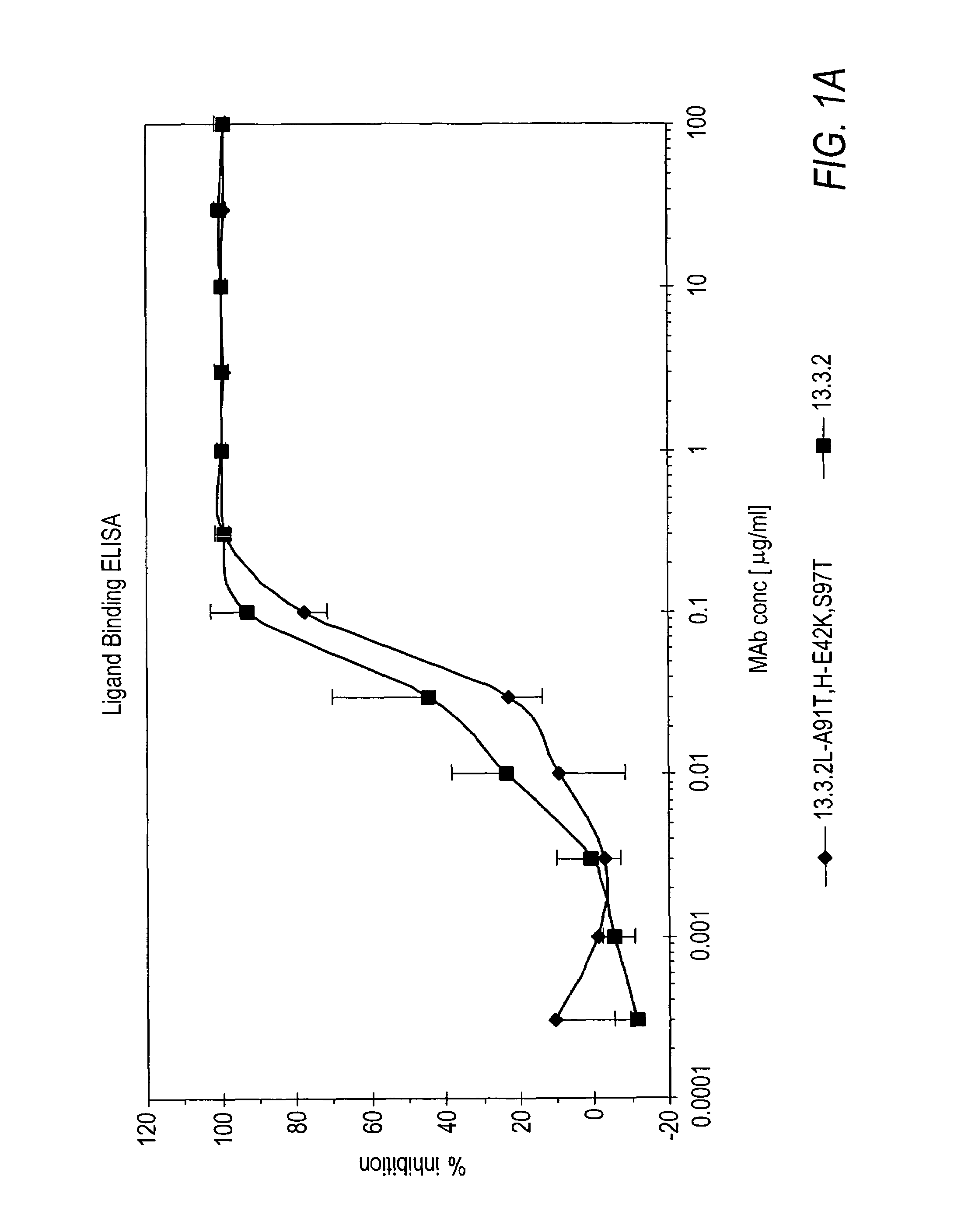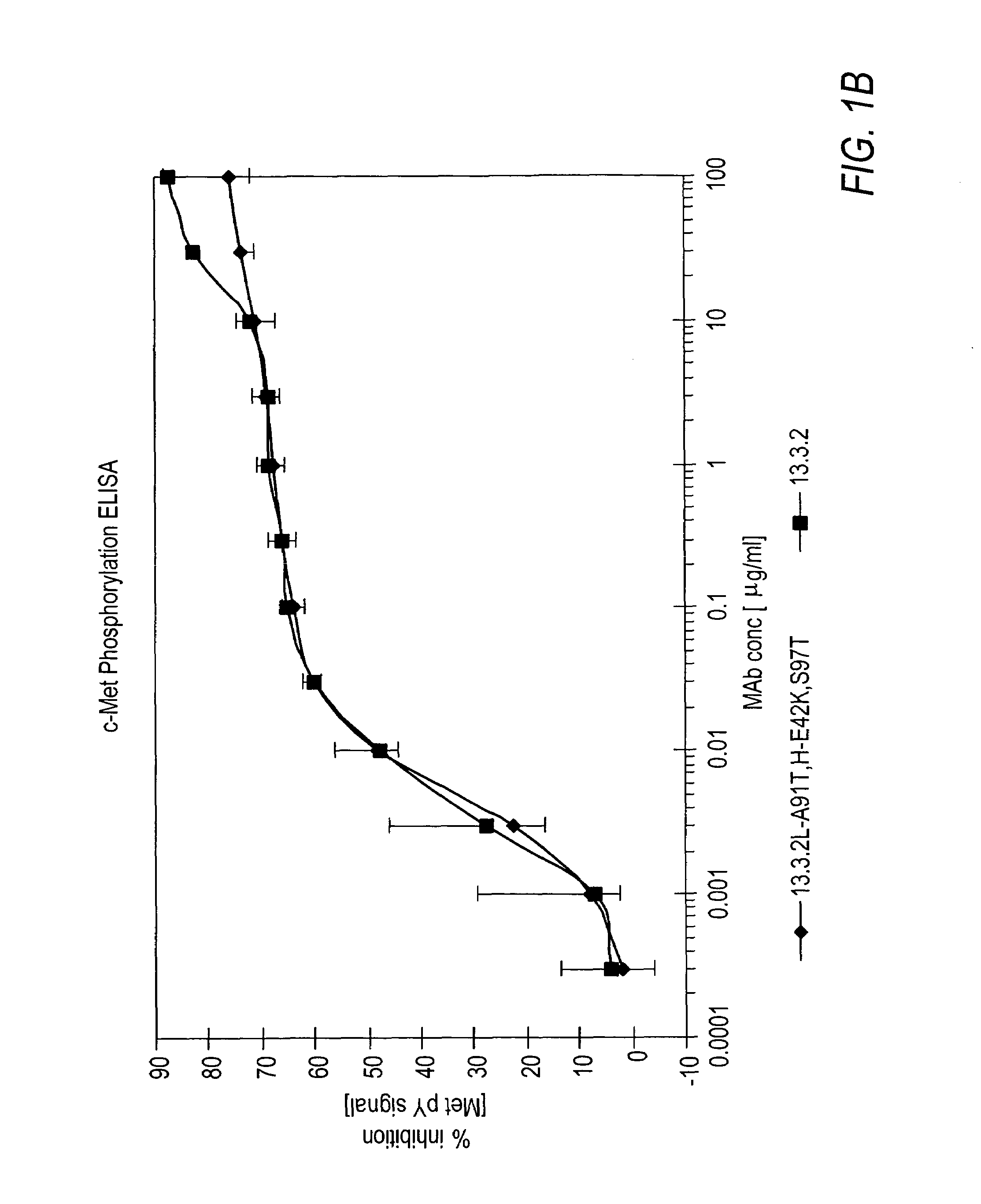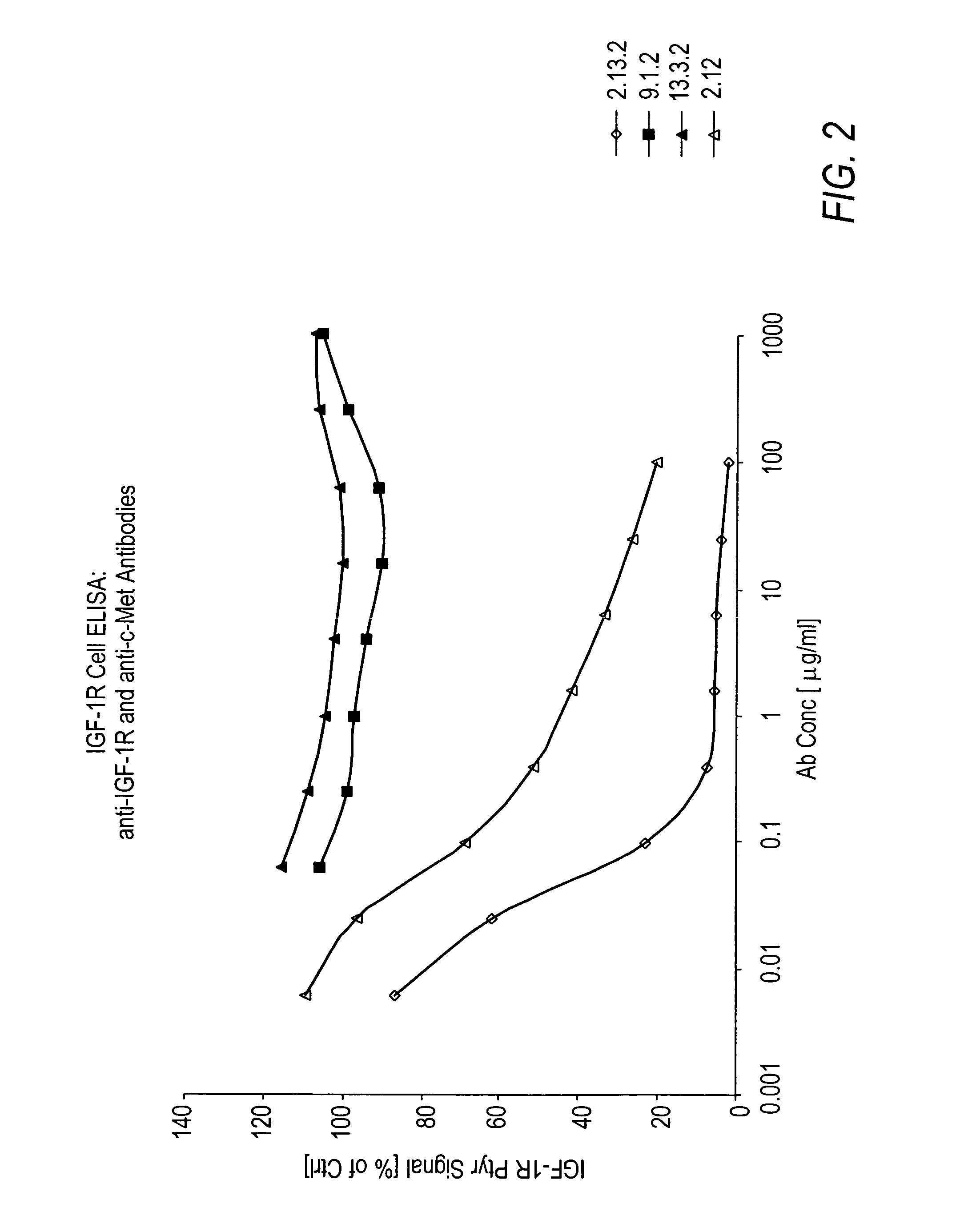Antibodies to c-Met
a technology of c-met and antibody, applied in the field of multifunctional growth factor, can solve the problem that mouse antibody cannot be easily used to treat human patients
- Summary
- Abstract
- Description
- Claims
- Application Information
AI Technical Summary
Problems solved by technology
Method used
Image
Examples
example i
Generation of Hybridomas Producing Anti-c-Met Antibody
[0251]Antibodies of the invention were prepared, selected, and assayed as follows:
[0252]Eight to ten week old XenoMouse™ mice were immunized intraperitoneally or in their hind footpads with either a c-Met extracellular domain fusion protein (10 μg / dose / mouse) (R&D Systems, Catalog #358MT) or with a NIH-3T3 transfected cell line that express human c-Met on its plasma membrane (10×106 cells / dose / mouse). This dose was repeated five to seven times over a three to eight week period. Four days before fusion, the mice were given a final injection of the extracellular domain fusion protein of human c-Met in PBS. The spleen and lymph node lymphocytes from immunized mice were fused with the non-secretory myeloma P3-X63-Ag8.653 cell line, and these fused cells were subjected to HAT selection as previously described (Galfre and Milstein, Methods Enzymol. 73:3-46, 1981). A panel of hybridomas was recovered that all secrete c-Met specific huma...
example ii
Sequences of Anti-c-Met-Antibodies Prepared in Accordance with the Invention
[0254]To analyze the structure of antibodies produced in accordance with the invention, nucleic acids were cloned that encode heavy and light chain fragments from hybridomas producing anti-c-Met monoclonal antibodies 13.3.2; 9.1.2; 8.70.2 and 8.90.3. Cloning and sequencing was accomplished as follows:
[0255]Poly(A)+ mRNA was isolated using a Fast-Track kit (Invitrogen) from approximately 2×105 hybridoma cells derived from XenoMouse™ mice immunized with human c-Met. cDNA was synthesized from the mRNA by using random primers. The random primed cDNA was amplified using human VH or human Vκ family specific variable domain primers (Marks et al., “Oligonucleotide primers for polymerase chain reaction amplification of human immunoglobulin variable genes and design of family-specific oligonucleotide probes.”Eur. J. Immunol. 21:985-991 (1991)) or a universal human VH primer [MG-30, 5′-CAGGTGCAGCTGGAGCAGTCIGG-3′] (SEQ ...
example iii
Human Anti-c-Met Antibodies Block Binding of HGF to c-Met
[0262]In vitro assays to measure HGF binding to c-Met in the presence of anti-c-Met antibodies were conducted to determine if the anti-c-Met antibodies were capable of inhibiting HGF binding to c-Met and their degree of inhibition.
[0263]Wells of a 96-well tissue culture plate were coated with 100 μl of a 5 μg / ml solution comprising c-Met ECD / Fc (R&D Systems #358 MT) in phosphate buffered saline (PBS) overnight at room temperature. The plates were kept at 4° C. until needed for experiments. The wells were washed four times with Tris-buffered saline (pH=8.0) with 0.05% TWEEN-20 (TBS-T). Next, 200 μl / well of blocking buffer (3% bovine serum albumin (BSA) in TBS-T) was added for 60 minutes (min) at room temperature to block non-specific binding sites. The wells were washed 4 times with 300 μl / well TBS-T. Next, 100 μl of Dulbecco's Modified Eagle medium (DMEM) supplemented with 10% FBS containing anti-c-Met antibodies from hybridom...
PUM
| Property | Measurement | Unit |
|---|---|---|
| Frequency | aaaaa | aaaaa |
Abstract
Description
Claims
Application Information
 Login to View More
Login to View More - R&D
- Intellectual Property
- Life Sciences
- Materials
- Tech Scout
- Unparalleled Data Quality
- Higher Quality Content
- 60% Fewer Hallucinations
Browse by: Latest US Patents, China's latest patents, Technical Efficacy Thesaurus, Application Domain, Technology Topic, Popular Technical Reports.
© 2025 PatSnap. All rights reserved.Legal|Privacy policy|Modern Slavery Act Transparency Statement|Sitemap|About US| Contact US: help@patsnap.com



